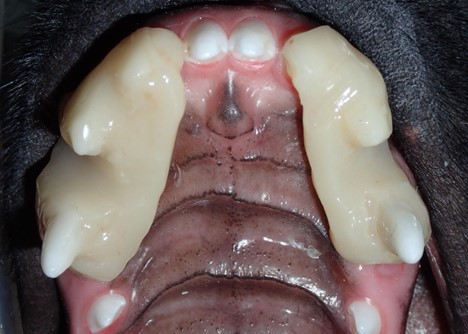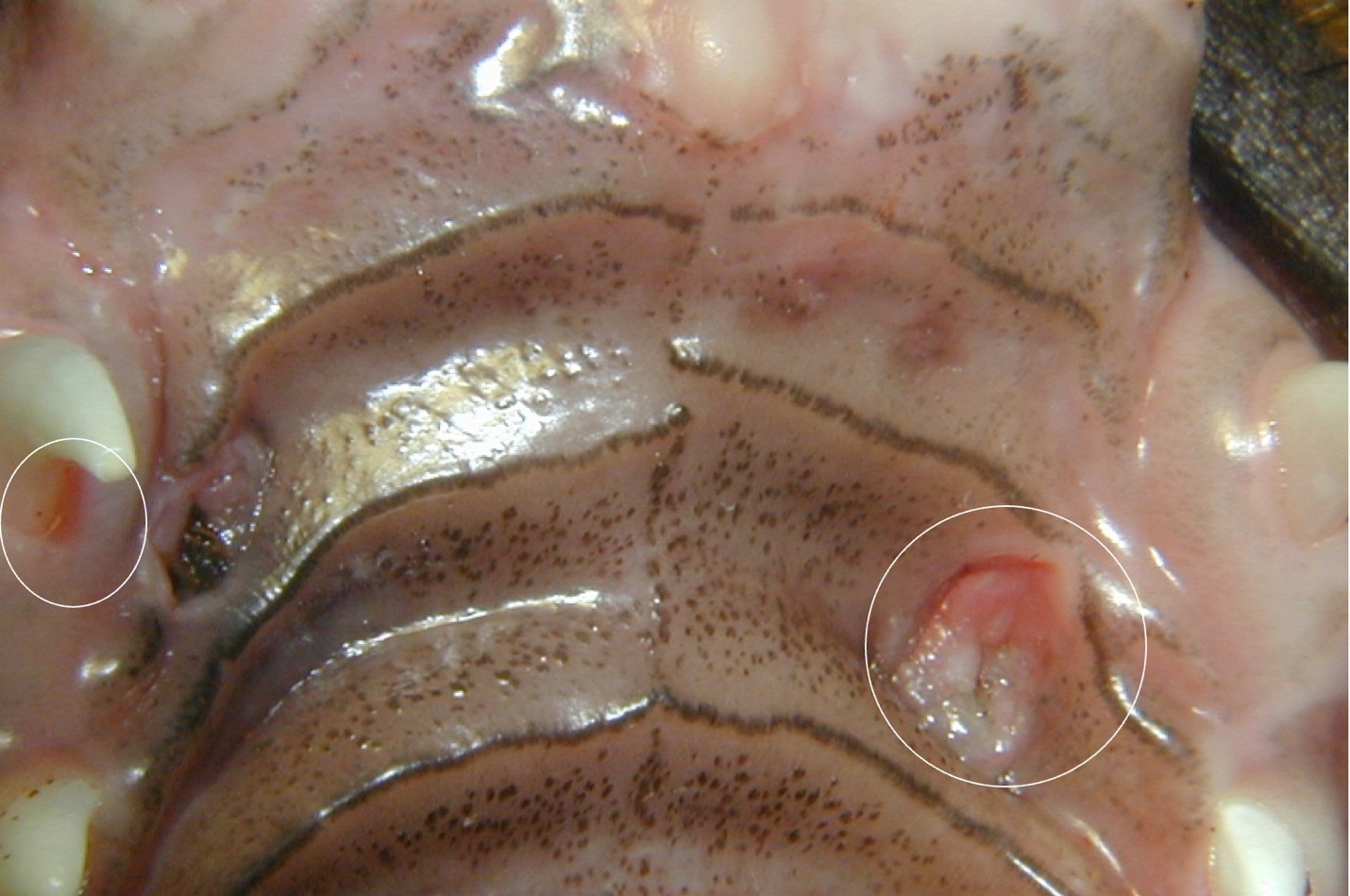
Orthodontics
Our doctors at Carefree Dentistry and Oral Surgery for Animals are highly experienced at bite evaluations, genetic counseling, and orthodontic treatments to relieve painful malocclusions (abnormal bites). As pet parents, it is our responsibility to provide our four-legged family members with a pain-free bite.
Occlusion is the relationship between the upper teeth and lower teeth and how they intermesh when the mouth is closed. Many puppies and kittens suffer painful malocclusions. Treatment of these malocclusion may include extractions, moving teeth with orthodontic devices like elastic bands and acrylic implants. Obviously, the treatment must be individualized for each patient. Our goal is to provide a functional, pain free occlusion, not necessarily a cosmetic outcome.
Base narrow permanent teeth
When the lower canine teeth (fangs) are tilted toward the center of the mouth, it is referred to as base narrow or lingual version. These teeth often strike the soft tissue of the roof of the mouth causing trauma. Long term trauma can erode a hole in the roof of the mouth that communicates with the nasal passages. Obviously, this can be a very painful condition. Treatment options include building an orthodontic device to help teeth move into a physiologic position, or reducing the height of the lower canine teeth. The commonly used orthodontic devices are acrylic inclined planes or crown extensions. These are used when teeth only have to move a short distance. Shortening the crowns of the lower canines is another option that will keep these teeth from hitting the palate. This procedure is done when the lower canines are severely displaced.



Base narrow primary teeth
When the lower baby canine teeth are tilted abnormally towards the center of the mouth. This condition is referred to as base narrow mandibular canine teeth or lingual version. The abnormal tilt of the teeth can poke holes in the soft tissue of the roof of the mouth.
Often this is a two-step procedure to relieve the pain caused by this malocclusion. If the baby canines are causing trauma and pain to the soft tissue of the roof of the mouth, they are often extracted. On occasion the permanent canine teeth will erupt in a normal position. More often than not the adult canine teeth will erupt in the same abnormal position requiring additional treatments (see Correction of Base Narrow Permanent Canine Teeth). If the patient is 14 weeks old or younger (12 weeks is ideal) composite tip extensions can be placed on the lower canine teeth to slowly lever them into the correct position. The adult canine teeth often, but not always, will then follow the levered baby canine teeth into the correct position.
